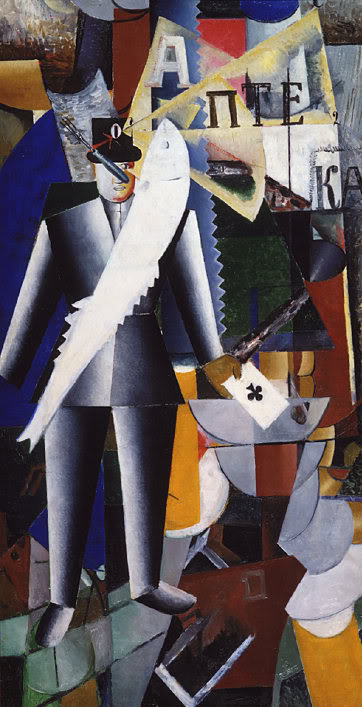Russian Art
Malevich, K. S.
"Aviator". 1914
Notes: Aviator.
This major "Cubo-Futurist" painting by Malevich is of his friend and fellow experimental artist, Ivan Kliun. Malevich characterized this and other Cubist works of 1912 and 1913 as "Zaum" realism. "Zaum" means beyond reason or beyond the rational mind. The concept was used in literature and painting to describe a more advanced level of consciousness and involved fragmenting words and images, putting them together in new and sometimes seemingly illogical relations and making them evoke ideas different from the ones they normally denoted. Malevich's experiments in Cubism preceded his venture into objectless art, and "Aviator," "Portrait of I.V. Kliun," and "An Englishman in Moscow" reveal both the apposition and opposition of planes which prefigure his objectless pictures. Malevich was not the only Russian avant-garde painter to experiment with Cubism, Orphism, and Futurism, which infused Cubism's fragmented planes with dynamism and movement. Those pictorial languages were also explored by the Moscow-based Cubo-Futurist movement led by the painter David Burliuk (see ImageBase) and associated originally with the Moscow Knave of Diamonds group founded in 1910 to foster the practice and exhibition of avant-garde art.

